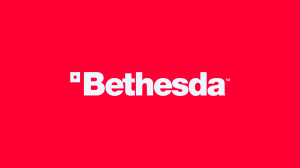
Image Comics was founded in 1992 by seven of comics’ most talented artists from the era. Each of them sought to both control and own their own characters, rather than continuing to produce new content for Marvel and DC Comics. From that original set of creations, two creations remain as consistent, monthly series: Erik Larsen’s Savage Dragon and Todd McFarlane‘s Spawn.
Videos by ComicBook.com
These titles are even more impressive considering how much both the direct market and superhero genre have changed in the past 30 years. Both series retain their original numbering and a coherent continuity, making them the two longest, ongoing superhero series published today by some criteria. Spawn has also made the leap to movies once, and is set to do so again, providing it with cultural cachet beyond the comic book shop. All of this makes it one series with sales well worth examining.
Recent Trends
When we are looking for sales stories at ComicBook.com, we start with data and then seek out trends that appear interesting or abnormal, it’s a fundamental part of our approach. It was only when reviewing sales for a large set of “mainstream series” from the past 10 months that Spawn began to stand out. The general expectation for a long-running series like Spawn would be a very steady sales track or a slow bleed in sales. Most superhero ongoing series slowly lose readers in the long-term and even the most reliable series tend to find a floor where sales plateau. This was not the case for Spawn, however.

Between July 2018 and April 2019, Spawn has been steadily increasing its total sales. The series experienced an overall growth of approximately 70% in that period. More importantly, the increase appeared to be sustained across that period with regular increases between most issues. This suggests that sales are indicative of an increasing readership, rather than an increase incurred by a single event or cover incentive. Even the dramatic increase and drop prior to July 2018 (as shown at the start of the above chart) could be partially explained by the return of The Violator. This growth appears more sustainable and provides a good reason to investigate further.
Long-Term Trends
We collected quarterly sales data (using the months of January, April, July, and October) to explore how the series had performed since January 2011. Since Spawn has reliably run on a monthly schedule, these samples from each year would collect about one-third of all data and provide a sense of the series’ general health across almost nine years. Importantly, this would show how the comic series had performed since the last two major landmarks in numbering, Spawn #200 and #250. The current increase is building towards the release of Spawn #300, so this long-term analysis would show whether it was part of an ongoing pattern.

This initial set of data provided some obvious outliers though. As we’ve explained before, sales of an individual issue can be very unrepresentative of readership or the health of a series. For example, this data includes:
- Spawn #200: An anniversary issue including many incentive covers
- Spawn #250: An anniversary issue including many incentive covers
- Spawn #284: The return of The Violator, a popular villain
These individual issues are great successes, but don’t help us understand the overall health of the ongoing series. We then excluded them from the data and replaced them with the subsequent issue’s sales to represent each quarter identified as an outlier. This produces a much more accurate vision of the series’ long-term sales.

Those three issues are not the only ones from the data we collected that appear to be outliers. In fact, the last three issues of Spawn with sales numbers available are all technically outliers for this nine-year set of sales data and every issue from the past 10 months falls within the upper quartile (i.e. the top 25%) of all sales of Spawn.
To provide a better sense of why that is a big deal, it’s important to know that outliers are not simply numbers that appear to stand out. They are calculated based upon the typical range of a large data set. The method we used provided substantial room for variance and yet the past three issues in a row all stand out as being beyond what should reasonably be expected. All of this makes the recent trend in Spawn‘s sales very notable.
Spawn sold an average of approximately 16,000 issues between April 2011 and January 2018, most of the time and units following a sales boost associated with Spawn #200. For the past 10 months it has averaged approximately 26,750 issues per month, with an upward moving trend. Spawn is experiencing a sustained hike in sales, one that exceeds all expectations. That leaves one big question: Why?
What Happened?
The most important thing to note is that this is not directly tied to the upcoming anniversary issue of Spawn #300. Past anniversary issues, like Spawn #200 and #250 have sold very well, with at least 60,000 issues ordered in the direct market, but have shown a limited effect on the issues preceding them. Spawn #199 sold only 18,076 issues, while Spawn #249 sold only 12,241 issues. The increase leading to Spawn #300 may be affected by interest in the upcoming anniversary, but it is certainly not the sole or central cause.
Discussion of the new Spawn movie likely provided some renewed interest in the series as well. McFarlane completed a script for the film in 2016, he was announced to direct in 2017, and Jamie Foxx was cast in the role in 2018. Yet the upswing in sales have only come in the past year following Foxx’s casting and the increasing likelihood of the movie reaching the big screen. There’s a likely connection, but not enough to explain the sustained increase in sales, especially without any awareness of how current events in the comics might benefit the speculator market following the potentially successful release of the film.
While the movie and anniversary might both serve as a reason for readers to return to the series, the best explanation for why they are sticking with it and boosting sales month-after-month is quality. Comic book stores are continuing to order more of each issue, in a fashion they have not under similar contexts in the past. This may be due to a shift in storytelling direction by McFarlane, or the stylish contributions of current artist Jason Shawn Alexander, or, most likely, a combination of the two.
Spawn may have continued to slide under the radar of critics and coverage, but the numbers tell a very different story about this series’ popularity. Sales suggest a silent audience of retailers and readers rallying around the title across the past year, securing a steady rise in sales each month. Without a relaunch, reboot, or any other gimmick, Spawn has captured new readers on its road to 300 issues. This is almost unheard of in superhero comics, and provides a hearty recommendation for curious comic readers to give this classic Image Comics title a second look. Spawn is still resonant in the direct market, almost 30 years after its debut.








